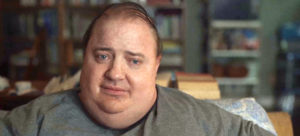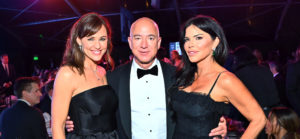There are a few debates in our political discourse that seem cursed to polarisation. Take, for example, discussion of overpopulation, resource constraints, and environmentalism. The two options appear to be either the belief that the world is or will soon be catastrophically overpopulated, that our natural resources will soon be depleted, and Malthus was basically right; or, alternatively, the attitude that overpopulation can literally never happen, that there is no such thing as resource constraint, and that any concern whatsoever about the carrying capacity of the planet is really just a stalking horse for racism and nihilism. Neither of these options seems appealing to me, but my efforts to carve out a third space have not borne fruit.
Discussion of obesity has similar vibes, but with this conversation specifically, there’s a sort of outdoor voice/indoor voice divide: one thing is said in public, another in private.
We have a big obesity problem, across the developed world and particularly in my home country of the United States. In the OECD countries, often used as shorthand for the advanced nations of the earth, half or more of all adults are overweight or obese. Here in America, one in every five children is obese. Overall, progress comes with a bitter (and expensive) problem: as countries become richer and more stable, obesity rates grow. Obesity is a classic “boiling frog” problem, both for individuals and for societies — a few pounds here and a few pounds there, and you’re suddenly facing real health consequences; a few percent here and a few percent there, and you’ve got projections showing that your already-overburdened healthcare system will eventually collapse. It contributes to heart disease, diabetes, cancer; it is estimated to cost the NHS £6 billion a year. Clearly, something has to be done.
And yet there’s an obvious set of complications. One stems from the simple fact that, though there have been some recent developments, consistent and scalable treatments for obesity are notoriously hard to come by. What works for some doesn’t work for most, and the constant endorsements of diet and exercise have proven totally unhelpful to many millions of people who have tried very hard to lose weight and found that they just can’t. And this connects to another complication: how do we create a public health system that helps people to lose weight and encourages healthy eating without unnecessarily insulting the people who struggle to do so?
It’s here that the polarisation comes in. While it’s increasingly unlikely for people to openly shame people for their weight problems, it’s still far more common than open racism or homophobia. Obesity is not in the same category as race or sexual identity, but as with those identity markers, being fat represents an unchosen vulnerability. The fat acceptance movement has been gathering steam for some time, arguing that not only does society unjustly mock and deride fat people, but does so based on bad science and bigoted ideology. While this general attitude is both understandable and humane, it’s taken to an unfortunate extreme. The “Healthy at Any Size” philosophy insists not only that fat people deserve equal rights and respect, but also that there is no inherent health disadvantage to being obese and that the public health community should be “weight neutral.” Unfortunately, these claims aren’t true.
Is there no hope of synthesising these perspectives? Can we not communally agree not to be cruel to fat people, regardless of the origins of their condition, and recognise that people have profoundly different odds of being fat or thin, while also insisting on the importance of a healthy diet and regular exercise? Is it really so hard to say: “Obese people deserve love, respect, and understanding, even as we recognise that being overweight is unhealthy and that the obesity epidemic is a public health crisis”?
Two new books address some of these questions: the recently-published Ravenous, by Henry Dimbleby, and the forthcoming Ultra-Processed People, by Chris van Tulleken. Both of the authors have impressive credentials. Both take wide-ranging journeys through the obesity crisis. Both offer up explanations, largely complementary, for why we’ve become fat. And like so many analyses of contemporary problems, their diagnoses are more compelling than their prognoses. Only one of the books comes up with a vaguely realistic solution.
Neither of the overviews of the obesity problem offered here is novel, exactly, but they both make a point that needs to be hammered home: expanding waistlines are not the result of declining public virtue, but of structural factors. For reasons of commerce, the modern diet has become unhealthy, filled with foods that offer us a caricature of real nutrition. This shifts some of the moral responsibility for our BMIs off our shoulders and onto the systems in which we live.
“Over the past 150 years food has become … not food,” writes van Tulleken. His definition of ultra-processed foods stresses artificiality in packaging and ingredients: “If it’s wrapped in plastic and has at least one ingredient that you wouldn’t usually find in a standard home kitchen, it’s UPF.” Dimbleby, meanwhile, writes of UPFs: “Colourings, emulsifiers, flavourings and other additives are added to make the products better-looking, tastier, more stable and longer-lasting. This makes them extremely ‘moreish’ – or ‘hyper-palatable’.”
Hyper-palatable, here, does not simply mean tasty. This food is dangerous not merely because it prompts us to desire it, but because eating it does not satiate that desire. These foods are engineered to keep you eating, to a degree that was unheard of prior to modern production techniques. Consider the relationship between fibre and sugars. In nature, they tend to be found together. Your body might crave the sugar in apples, but you can’t sit down and eat an entire bag of them, because apples are highly fibrous, and fibre makes you feel full. In contrast, you most certainly can sit down and eat an entire king-size bag of M&Ms, which have a dramatically lower calories to fibre ratio (1023 calories and 5.8 grams of fibre in a cup) to raw apple (65 calories and 3 grams in a cup).
Modern food is specifically designed so that you never want to stop eating, which makes the food manufacturers rich and you fat. Another element of this broader reality is that ultra-processed foods are often lacking in micronutrients such as vitamins and minerals. This, in turn, makes people continue to crave food even after consuming many calories, as they’re simply not getting what their body needs. In communities where UPFs are the norm, it’s very common for obesity and nutritional deficiencies to be found together.
In fairness, the development of these techniques was not undertaken for entirely nefarious reasons. Dimbleby points out that the last food crisis created the conditions that led to the current food crisis. Early in the 20th century, concerns about how to feed a human population that was absolutely exploding — there’s Malthus again — created intense pressure to derive more calories from a given portion of land. There was also a compelling need for better food preservation, leading to the addition of a lot of new substances in our food and the removal of others. It turns out that making food last longer often involves removing fibre. (Think of the way celery goes soft over time and you have a sense of how short fibre’s shelf-life is.) In an earlier era, when there was a deficit of calories, this probably didn’t seem like a bad bargain for food scientists.
But the legitimate need to feed more people fits all too well with the capitalist dictates of the food industry. There’s little inherent financial reason for any given food producer to prioritise nutritional value, and those foods that do are usually more expensive or, at least, practically inaccessible to those who do not frequent farmers’ markets or upscale grocery stores. The “normal” food distribution system continues to prioritise selling as many calories for as little money as possible. As Dimbleby writes, “the food system we created prioritises quantity over quality. We have changed our diet to match this system, and this diet is now making both us and our planet ill.”
Both of the books are potential fodder for the obesity culture war, though they pretty firmly reject simplistic characterisations of obesity as a matter of character or willpower. “Every discussion of weight gain, whether in the press or in our own heads, is suppurating with blame, which is always directed at the people who live with it,” writes van Tulleken. He sees this as straightforwardly unfair in the face of the structural forces that have altered our food supply. Similarly, Dimbleby writes: “Berating or despising individuals for being overweight is unkind, counter-productive (it exacerbates the depression and self-reproach that so often characterise disordered eating) and, above all, misplaced.” Both authors reference research that demonstrates that, while exercise has a number of health benefits, weight loss isn’t among them; Dimbleby has a chapter titled “You can’t outrun a bad diet”, which underlines the fact that exercise increases food cravings, which prompt eating that undoes calorie loss. This has grown to become a bit of conventional wisdom over time, but the age-old advice to eat less and exercise more is hard to shake.
But what can you do? Van Tulleken suggests… just about nothing. He’s insistent that genetics, the presence of unhealthy food options, and marketing essentially hold fat people hostage. Ultra-processed foods, he argues, “hijack our brains”. Even his brief final chapter on trying to live without UPFs is positively fatalistic, mostly counselling people not to hold out hope. As is the fashion, he laboriously argues that poverty effectively prevents the impoverished from making any decisions at all.
It’s a conclusion that is not, I think, supported by the evidence he presents. The existence of genetic predispositions and just-so stories about neurological predispositions don’t amount to a compelling dismissal of the role of the conscious mind. It is also a good example of yet more binary, polarised maximalism: it seems not to have occurred to van Tulleken that he could argue persuasively that poverty influences food choices and that our system incentivises eating unhealthy food without arguing that we are all essentially automatons in the hands of food companies that can literally dictate our behaviours to us. I suspect, frankly, that this lack of nuance had more to do with selling books than anything else.
And yet this extreme pessimism is undermined where van Tulleken argues that we must make demands of government. Mandatory food labelling, he suggests, is effective: “The labelling has had huge impact, with decreases in food purchases and, perhaps most significantly, research showing that the regulation made children ask their parents not to buy the products.” If labels can prompt better eating behaviour, how can van Tulleken go to painful lengths to insist on the futility of trying to make good choices. Over and over again, he emphasises that the individual is simply no match for the power of the food industry and their dastardly techniques. But elsewhere, his certainty slips, and he seems to suggest that, perhaps, maybe, just a little, an individual can moderate their consumption of the food he describes as poisonous, and in so doing improve their health. It’s a glaring contradiction.
Dimbleby is a little more sanguine, and allows for a bit more hope. But, like van Tulleken, he emphasises systems over individuals. Dimbleby’s chapter on solutions — titled “The Power of Love”, I’m sorry to say — insists that solving our problems will involve creating a new “food culture”. Using both government intervention and community effort, we can change both the economics of food production and our habits regarding food preparation, in a way that promotes healthier eating. “Change has to come from both directions,” writes Dimbleby: “top-down, in the form of government legislation, taxes and regulations, but also bottom-up, with talented and dedicated people determined to improve the food in their own families, schools or communities.” This simultaneously sounds like a very natural and necessary evolution for our society, and like a heavy lift. But it’s a more humanistic and workable vision than that of van Tulleken, who largely seems content to describe why things are so bad without imagining how they might get better.
Recently, a great deal of ink has been spilled on the power of semaglutides, drugs developed to combat diabetes that have been shown to have meaningful impacts on obesity where so many others have failed. With brand names such as Ozempic and Wegovy, these new treatments are not stimulants, which have often been used for weight loss, and don’t appear to be addictive. But can they tame an epidemic? Van Tulleken doesn’t mention these drugs, but Dimbleby does briefly. He offers an evenhanded approach, insisting that they aren’t a silver bullet, but also admits that the very few other treatments actually work.
And this might just be all we’re left with. Government intervention seems unlikely; the voluntary pursuit of virtue rather than profit by private corporations unthinkable; and individual choice deeply constrained by external factors. The immensity of the problem, the sheer destructive potential of obesity, leaves me wondering if a pharmaceutical solution is the only one we can really count on. No, hundreds of millions of people injecting themselves every week for the rest of their lives doesn’t seem particularly sensible or sustainable to me. But it is perhaps the least bad solution to obesity, a problem from hell.
Disclaimer
Some of the posts we share are controversial and we do not necessarily agree with them in the whole extend. Sometimes we agree with the content or part of it but we do not agree with the narration or language. Nevertheless we find them somehow interesting, valuable and/or informative or we share them, because we strongly believe in freedom of speech, free press and journalism. We strongly encourage you to have a critical approach to all the content, do your own research and analysis to build your own opinion.
We would be glad to have your feedback.
Source: UnHerd Read the original article here: https://unherd.com/




